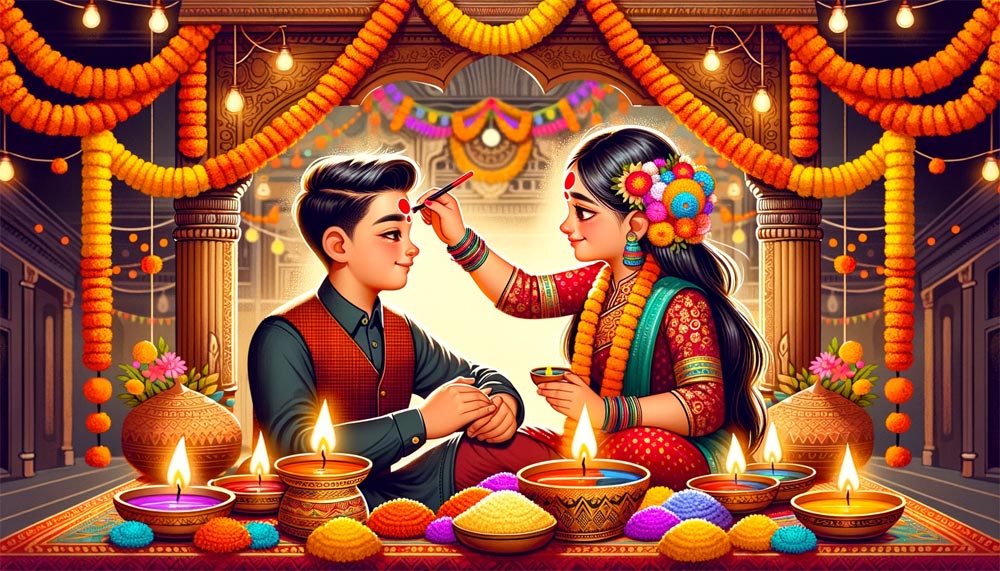
Bhai Tika: A Day of Bond and Tradition
On Sunday, the fifth day of the Yam Panchak festival, Bhai Tika is celebrated with great reverence. Sisters apply the traditional multi-colored or seven-colored tika to their brothers' foreheads, praying for their long lives, health, and prosperity.
Bhai Tika, celebrated each year on Kartik Shukla Dwitiya, is one of the most significant days of Tihar, Nepal's second-largest festival. On this day, also known as Yam Dwitiya, brothers receive tika from their sisters with deep cultural and religious sentiments.
After applying tika on their brothers, it is customary for brothers to return the tika ritual to their sisters. According to religious texts, sisters receive blessings of unbroken good fortune and prosperity through this ritual, as explained by Professor Dr. Devmani Bhattarai, a member of Nepal’s Panchang Nirnayak Vikas Samiti.
According to the committee's president, Professor Shrikrishna Adhikari, the auspicious time for Bhai Tika this year is at 11:37 AM. While tika can be applied throughout the day, those seeking the most favorable moment should apply it during this Abhijit Muhurta. Additionally, it is advised that sisters face east and brothers face west for the ritual, aligning with astrological guidelines as the moon is in Scorpio, benefiting from a traditional placement on the right side for auspicious activities.
For state leaders, the committee has also suggested adhering to this specific time. In the ceremony, sisters prepare a main tray with lamps, the Kalash, and Lord Ganesh statues set up on Laxmi Puja day while performing rituals on the Ashtadal (eight-petaled) symbol for deities like Markandeya, Ashwatthama, Bali, Vyasa, Hanuman, Vibhishana, Kripacharya, and Parashurama, along with Chitragupta, Yamaraj, Yamuna, Dharmaraj, and other deities. Sisters also make a traditional oil line around their brothers, adorning them with Marigold, Makhmali garlands, and chrysanthemums.
While recent trends promote seven-colored tika, classical texts suggest five colors for Bhai Tika: red, white, yellow, green, and blue, as mentioned by President Adhikari.
According to tradition, after applying tika, sisters offer walnuts, chestnuts, assorted masala, and sweets like Sel roti, and brothers reciprocate with gifts, clothing, and cash as symbols of good fortune.
Bal Gopaleshwar Temple Opening
The Bal Gopaleshwar Temple, located in Rani Pokhari in Kathmandu, opens today for those without siblings. This temple is only accessible once a year on Bhai Tika when individuals without siblings can perform rituals and apply tika.
Khanjaneshwar Mahadev Temple Tradition
Similarly, those without siblings visit the Khanjaneshwar Mahadev Temple in Jayabageshwari. Dr. Govinda Tandon, a former member secretary of the Pashupati Area Development Trust, shared that before 2035 BS, people had to dive into Rani Pokhari to reach the Bal Gopaleshwar Temple, so the temple was closed to avoid accidents. During this period, those without siblings would gather at Khanjaneshwar Mahadev Temple, a tradition still followed today.
After 2035 BS, the Rani Pokhari temple began opening regularly on Bhai Tika day. The Newar community also celebrates this day as "Kija Puja." Some families observed Kija Puja on Saturday.
Festival




